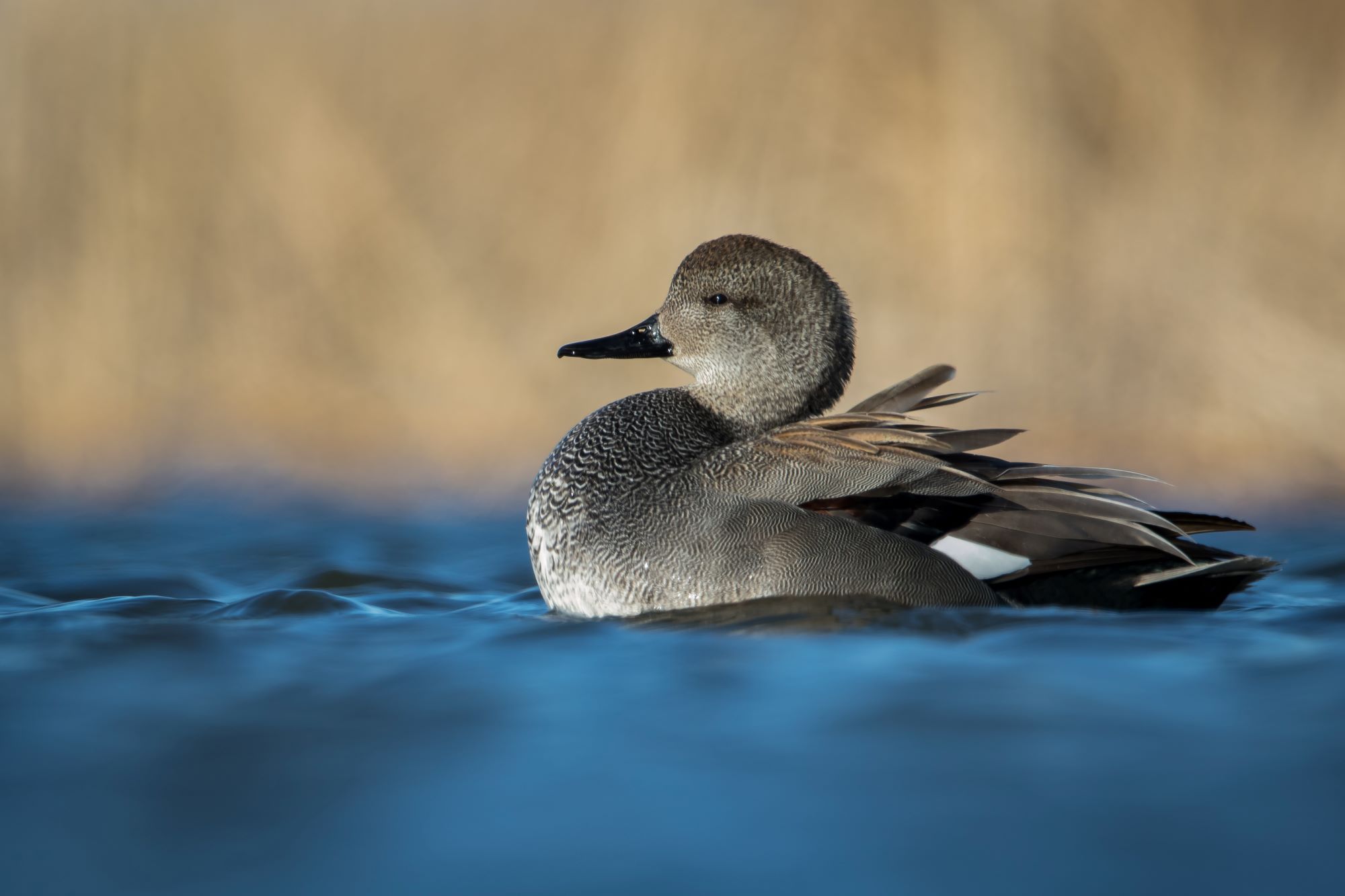
Gadwalls in Utah
Gadwalls, a species of dabbling ducks, hold a significant presence in Utah's diverse aquatic habitats. Known scientifically as Mareca strepera, these medium-sized ducks are often recognized for their understated elegance. Males display a subtle pattern of grays with black rear ends, and their breeding plumage includes a striking black bill; females are mottled brown, providing excellent camouflage among reeds and aquatic vegetation. In Utah, Gadwalls are commonly found in marshes, ponds, and along the shores of larger lakes, where they prefer habitats with ample vegetation for feeding and nesting. They are year-round residents in the state, with their numbers increasing during the migration seasons as additional birds arrive from other areas.
Gadwalls have a unique feeding style compared to other dabbling ducks. They primarily feed on aquatic vegetation and invertebrates by tipping forward in the water, similar to the familiar mallard, but they also engage in more active foraging. Gadwalls often uproot vegetation by paddling their feet rapidly while submerged, a technique that allows them to access food sources that other ducks cannot. This feeding behavior makes them important contributors to the health of Utah's wetland ecosystems, as they help control aquatic vegetation and provide a balance in the food web.
The breeding season is a special time for Gadwalls in Utah. They typically form monogamous pairs for the season, and the female selects the nesting site, usually choosing dense vegetation near water to provide cover and easy access to food. The nest is a simple structure on the ground, lined with down feathers plucked from the female’s breast. She lays an average of 7 to 12 eggs, which she incubates for about three to four weeks. During this time, the male usually stays nearby, guarding the territory against predators and other threats.
Conservation of wetland habitats is crucial for the well-being of Gadwalls in Utah. These habitats face threats from human activities such as development, pollution, and changes in water management. Efforts to protect and restore wetlands are essential for maintaining healthy populations of Gadwalls, as well as the numerous other wildlife species that depend on these ecosystems. Utah's wetland conservation initiatives often involve collaboration between government agencies, non-profit organizations, and local communities, reflecting the broad importance of these areas to both wildlife and people.
For birdwatchers and nature enthusiasts, observing Gadwalls in Utah's wetlands is a rewarding experience. Their subtle beauty, interesting feeding habits, and the role they play in the wetland ecosystem make them a fascinating subject for study and observation. The presence of Gadwalls in Utah's wetlands is not only a sign of ecological health but also a reminder of the importance of preserving these vital natural habitats. Their year-round presence allows for extended opportunities to observe and appreciate these elegant birds, adding to the rich tapestry of Utah's natural biodiversity.